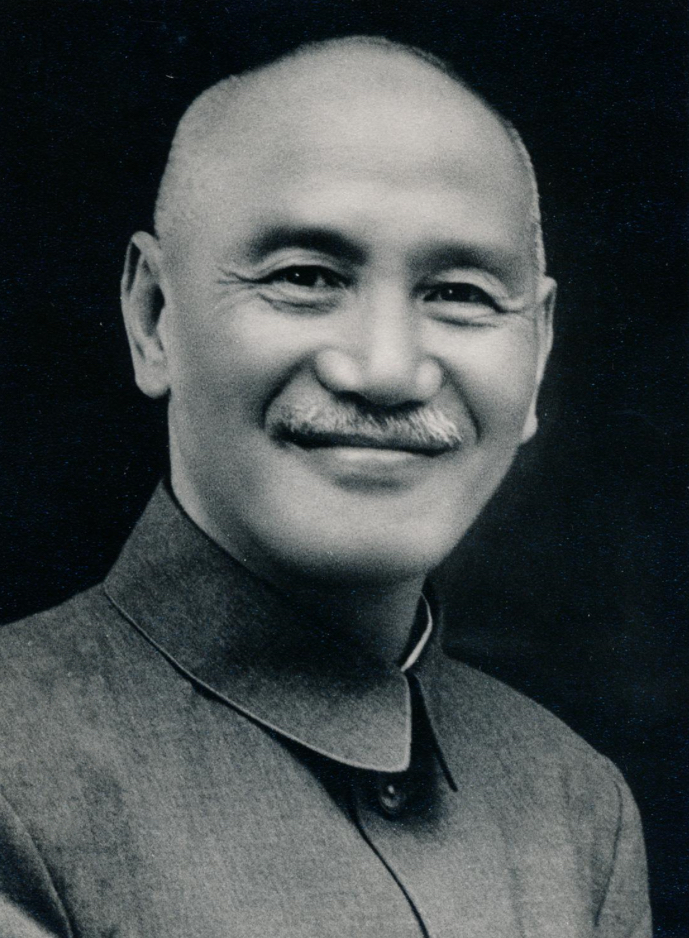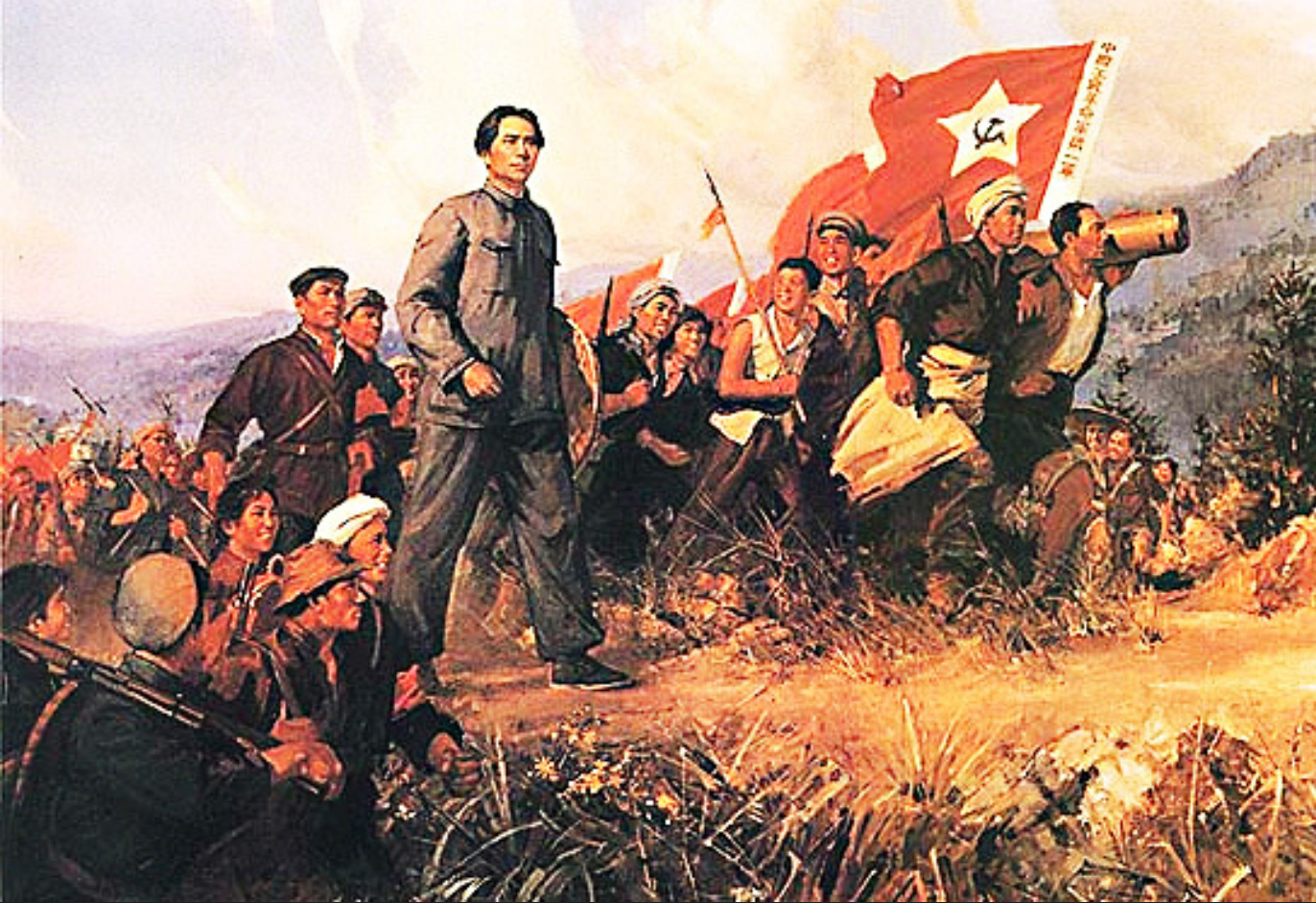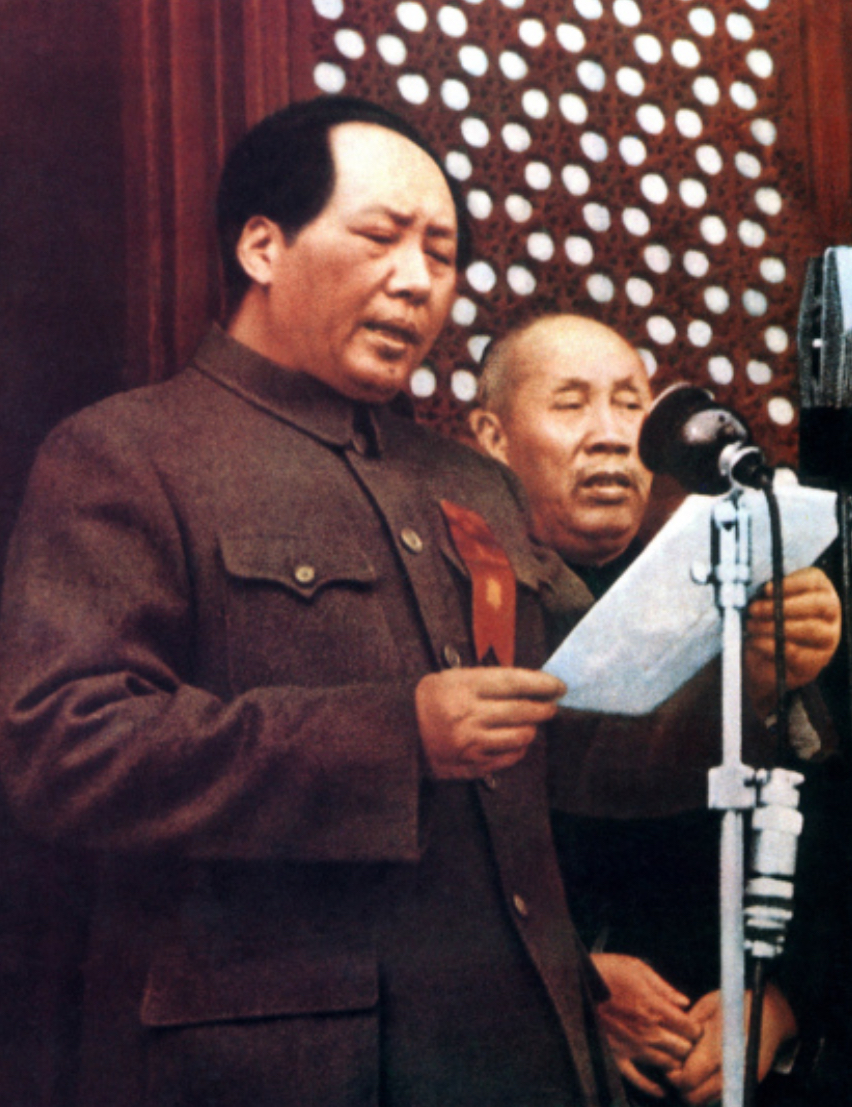How did Mao and the CCP come to power in 1949?
1/9
Earn XP
Description and Tags
Name | Mastery | Learn | Test | Matching | Spaced |
|---|
No study sessions yet.
10 Terms
End of the Qing Dynasty
Overthrown in 1911, had been in power since 1644
The republic that replaced them in 1911 disintegrated almost immediately as rival warlords fought to establish control of China's regions, ignoring the central governments efforts to impose law and order

Chiang Kai-shek and the warlords
After 10 years of unrest Chiang Kai-shek and the Nationalist Party (Guomindang (GMD)) actually defeated the warlords and brought China under greater central control
The Nanking Decade
1927-1937
Chiang established relative political stability and tried to destroy the Communists by driving them into the interior of China
The Communists regrouped and set up the Jiangxi soviet in 1928
Chiang launched a series of encirclement campaigns aimed at denying resources to Jiangxi

The Long March
In 1934 some 100,000 communists embarked on a retreat known as the long march (in communist mythology) in order to escape the sieges of the Nanking decade
Only 20,000 survived making it to Yannan where they established a new soviet that was to remain their base
It was here Mao asserted his leadership over the party and here the communists gained vital experience of government which prepared them to some extent govern the country after 1949
The Japanese invasion of Manchuria
1931
Rich North Eastern province with lots of industry (main economic area of China)
The GMD had been powerless to stop the Japanese from invading and occupying
Sino-Japanese War
By 1937, Japan were ready to extend their control further.
Faced with a common enemy, the GMD and CCP made a United Front against the invaders but until 1941 they were unable to prevent the Japanese steadily pushing south and occupying the eastern coastal zone
Japanese bombing of Pearl Harbour and consequences
December 1941
The Americans began helping the Chinese to fight back against the Japanese.
Chiang hoped the US Army force would land on Chinese soil as a prelude to attacking Japan and help destroy the communists.
However the Japanese surrendered sooner than expected when the atomic bombs were dropped on Hiroshima and Nagasaki by the US.
Civil War in China
1946
Despite the USA's attempts to get the two sides to compromise and form and coalition government a civil war broke out between the GMD and CCP
Chiang had more resources but ruined his advantage by rushing into a full-scale attack on the Communist strongholds in Manchuria
Having survived this onslaught the Communist were gradually able to move south and take over the Nationalist held areas

Establishment of the PRC (People's republic of China)
Mao Zedong addressed some 300,000 supporters in Tiananmen Square, Beijing on the 1st of October 1949
Brought an end to 3 years of civil war and 20 years of turmoil
December 1949
Nationalist leader Chiang Kai-Shek retreats to Taiwan to join the remnants of his forces
Although he claimed to be the legitimate ruler Mao and the communists were left in de facto control